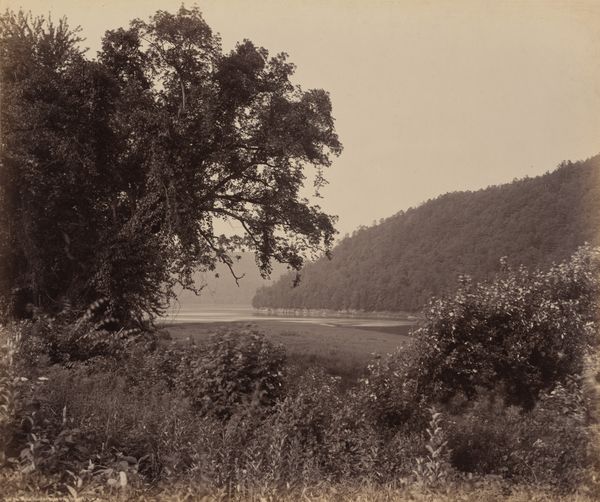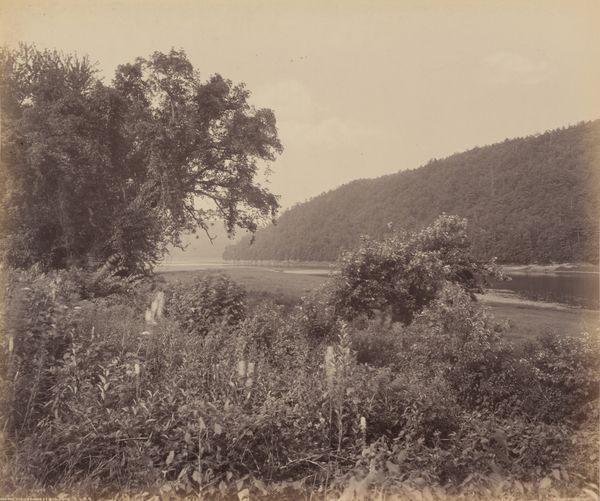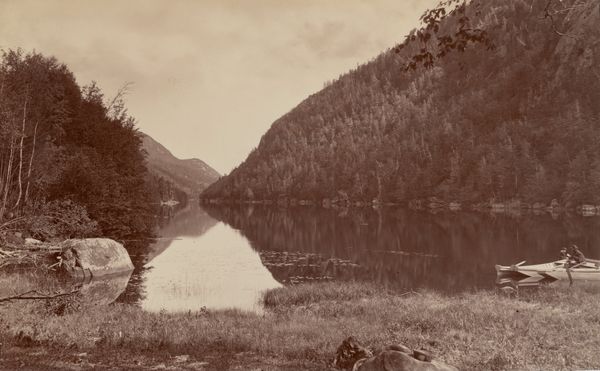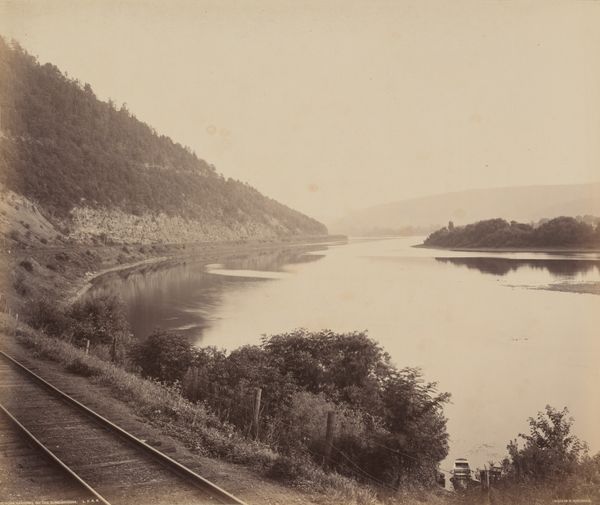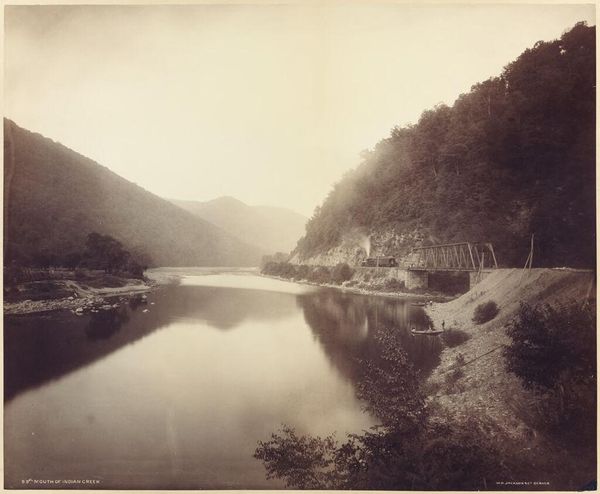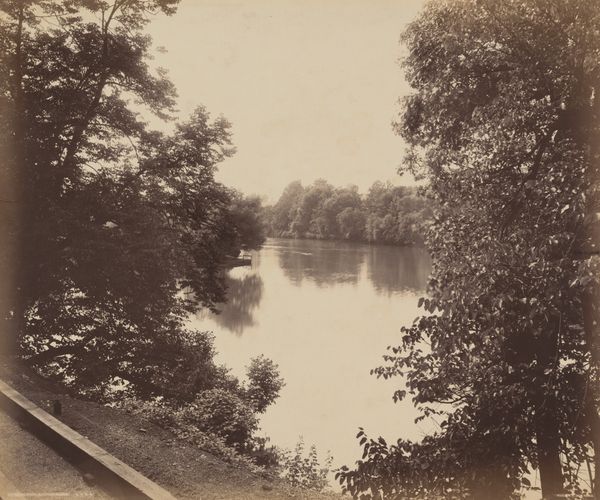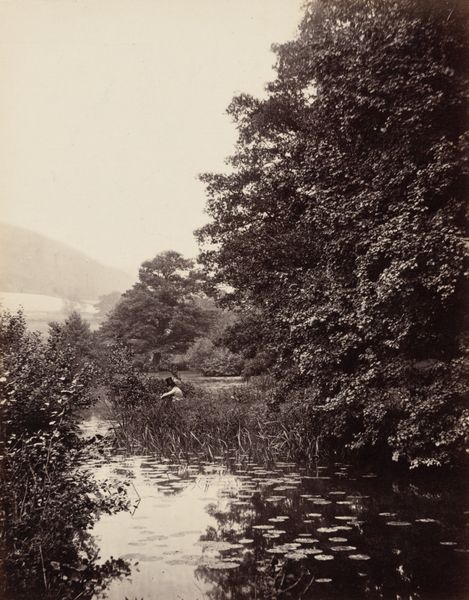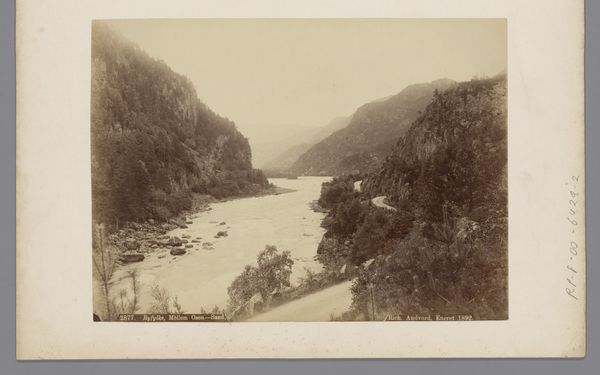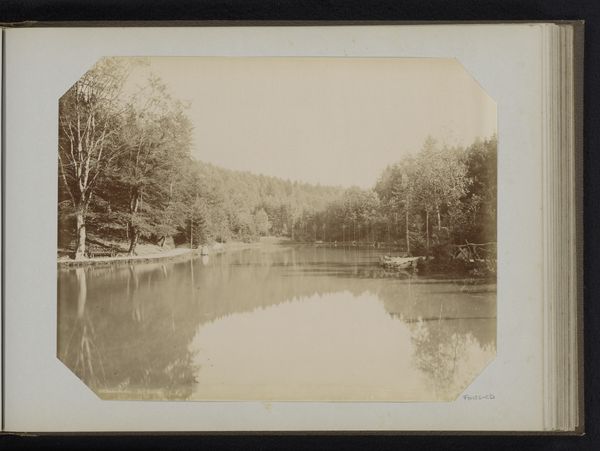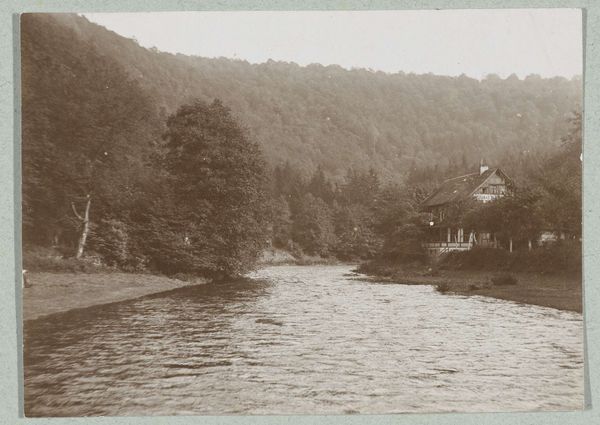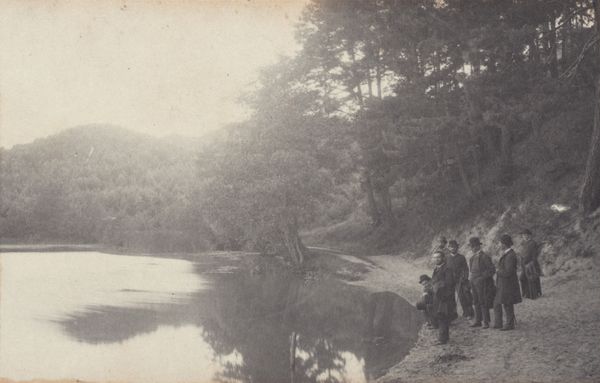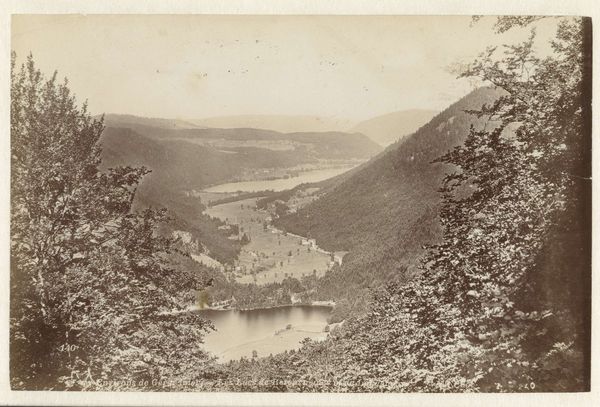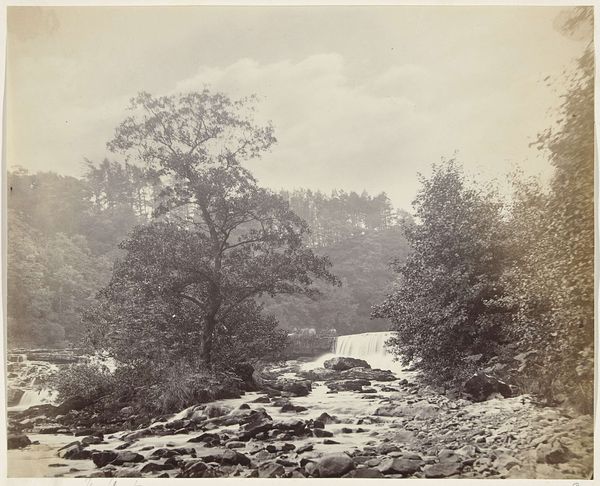
Dimensions: image: 43.7 × 52.1 cm (17 3/16 × 20 1/2 in.) mount: 49.7 × 59.1 cm (19 9/16 × 23 1/4 in.)
Copyright: National Gallery of Art: CC0 1.0
Curator: Here we have William H. Rau's "Susquehanna at Standing Stone," a gelatin silver print from around 1895. My first impression is one of incredible stillness, a near monochrome that gives the scene a timeless, almost ethereal quality. Editor: Timeless indeed, and materially present! The very process—gelatin silver—implies industrial labor, silver mined and processed, gelatin derived from animal byproducts... it makes one think about the infrastructure supporting the late 19th century landscape industry, how photography reshaped the collective vision of nature. Curator: Precisely. Note how Rau uses a soft focus, characteristic of pictorialism, to evoke mood and feeling, drawing from Hudson River School painting's aesthetics. He wasn't merely documenting, but constructing an emotional space through careful tonal arrangements and atmospheric perspective. The photographic process serves a larger compositional harmony. Editor: Agreed, but I believe the focus of that time misses the labor that made such vision accessible to the rising middle class. The making of gelatin-silver-print requires exploiting natural and animal resources, it's the tension between industrial exploitation and artistic endeavor. And "Standing Stone" itself—that lone form in the water—likely predates any photographic record. The original name from Native Americans tells a different relationship with the river that the "aesthetic" depiction by Rau obscures. Curator: But wouldn’t you agree that Rau has also effectively distilled the essence of the Susquehanna, presenting not merely a scene, but a contemplation on nature's enduring power? Editor: Yes, but through a very particular, and historically situated lens of consumption. Curator: It appears we find ourselves contemplating more than just the image then, perhaps a discussion for a longer debate about intention and affect, both in visual terms and socioeconomic structures, indeed! Editor: The best art always leaves you with something more than you started with, a dialogue.
Comments
No comments
Be the first to comment and join the conversation on the ultimate creative platform.

